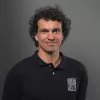Discipline
Paragliding XC
What went wrong ?
Many pilots didn't want or don't want to switch for a submarine style harness, many of which because the poor safety of the protectors, but had to change, to keep up with the performance of other pilots.
The omologation tests, from next year, are going to change, making the sport a littlebit safer, but errorproof enough?
Just think about it, you never need a protector, if you don't do mistakes; so we need to be "protected" when we do mistakes, when we are not in control anymore.
Now, is being used the breaking bone limit, to say what shuld the protector do, combined with the sink rate of an open reserve.
How many times are we flying with more then 5.5m/s (reserve certification limit) winds? How many times the glider is making the reserve less efficent, and so with a bigger sink?
What would you propose ?
If the safety margin is going to be changed by the certification, all of us are going to be safer without loosing relative performance
So let's so increase by a lot the safety margin of the protectors, (pure example) 1.5 times softer braking in a 10m/s sink,
because it's a shame that we are risking our safety in something that doesn't depend on pilot skill, but on pure luck.
*example numbers shuld be calculated by the expected numbers of body limit and resque sink, multiplied by a safety factor, that can be different on the two numbers, for example 1.5 and 1.7
















Comments
CIVL Delegate
I'm Glad you mentioned it. Luc Armant sometimes arrive to the same conclusion. Altought very counter intuitive at first I believe it is a solution to consider seriously. Main drawback is politics, transparency and model choice...